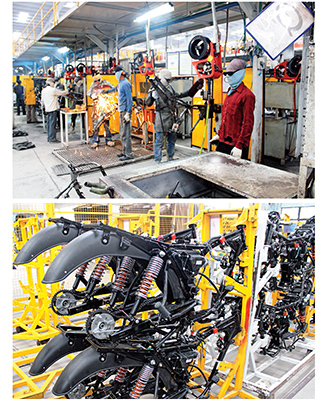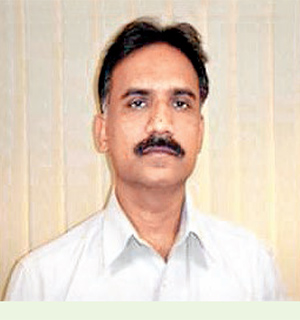 Expanding Global Footprint
Expanding Global Footprint
The second plant is an export oriented unit, which has been manufacturing sheet metal parts for Renault (both SUVs and LCVs), supplied through Anvis. This is the one that is adding another feather in the cap, as it commenced manufacturing parts for BMW Motorad. The first consignment comprising of few parts including two variants of handlebars, side stand and footboard for both sides – front and rear, will be shipped to the German company during the course of this month. Each part takes shape in three stations powered by an army of poke yokes. Robotic welding is deployed to make parts for BMW while special purpose machines build parts for Renault.
Heavy Weight
The third plant makes sheet metal components and here the machines appear to be wrestlers and kick-boxers. It has 28 presses ranging from 15 to 500 tonne in two distinctive configurations – light duty and heavy duty presses, making parts like windshield frames, floor panel and fuel tank for Bajaj three-wheelers. Also it makes some parts for Lear. In addition to presses, the windshield line has 15 spot welding machines and two CO2 welling systems. The floor base is fabricated with five spot welding machines while the chain cases for two-wheelers are produced with 12 such machines.
Moving Belt
There is continuous movement of conveyor belt carrying diverse parts within the factory to different destinations and at varied levels, reminds one of a ballet dance or Japanese Zen meditation. The fourth plant is divided into three operating lines -frame fabrication, electroplating and frame assembling, with conveyors running around at three functional levels.
 Power Play
Power Play
The state-of-the-art powder coating plant gives the frames clear appearance and solid feel, which will last for several years. Metalman in Waluj has about 55 robots for different kinds of manufacturing. This includes 42 robots in the fabrication unit in three U-formation processes, following single-piece flow to make frames for four models of Bajaj including Boxer and Discover 150. Typically, the frames are fabricated in two parts – front and rear which are later fused together.
This plant became operational about six months ago and is still in the ramping up phase. The assembly area is interesting as the associates put together the parts onto the frame. Since it follows a TAKT time of 24 seconds, the operator keeps shunting with the conveyor until his portion of the assembly is done and then comes back to original position only to take up the next frame. All the four models are assembled in the single line with 70 to 100 parts including shock absorber, chain and sprocket, rear mudguards, side and main stand, foot rest, brake pedal, wiring, horn, rear turn light supplied by Tier 2 vendors. To ensure quality, it follows kit system since the volumes of parts and speed of assembling is high. In total, MAPL churns out five bike frames every two minutes.
Progress
From one plant in 1986, MAPL has grown to seven plants in Ludhiana, Waluj and Pithampur in addition to two sister concern auto-parts manufacturing units along with a JV. The company has over 2,000 employees across all plants including about 200 engineers. As a group, it caters to several OEMs including Case New Holland, Force Motors, Mahindra Two Wheelers, Maruti, Renault India, Nissan India, Volkswagen, GM India, Ford India and Volvo. Besides, it exports to Aurelia and Meiller Kipper. The four plants in Waluj reported a turnover of Rs 225 crore in 2012-13 and hope to end fiscal 2014 with Rs 350 crore.
Story and Photography: T Murrali
In co nversation S G Mundada, president (operation) MAPL
 How many frames MAPL at Waluj makes everyday?
How many frames MAPL at Waluj makes everyday?
Every day we fabricate 3,500 frames, ED coat about 5,000 frames and assemble 2,500 frames. Within a month the assembling will increase to 4,000 frames.
How do you plan to enhance productivity?
We are adding one more conveyor and two robotic lines soon. We plan to induct about 25 robots during the next fiscal. Also we plan to set up a design and engineering centre, where the components will be designed and developed. It will be supported with a tool room.
What is the current ppm level and what are plans?
We are exporting about 100,000 components per month to Anvis to Romania and we have been maintaining zero ppm for the last four years. It is 500 ppm for frames and we plant to contain it to 100 through automation and training.
Can you tell us about your new plans?
Recently we have received a letter of intent from another two-wheeler company to source parts. We hope to get business from them soon.












One Comment